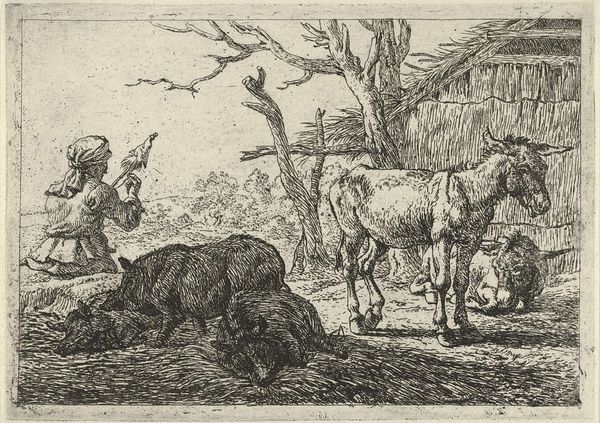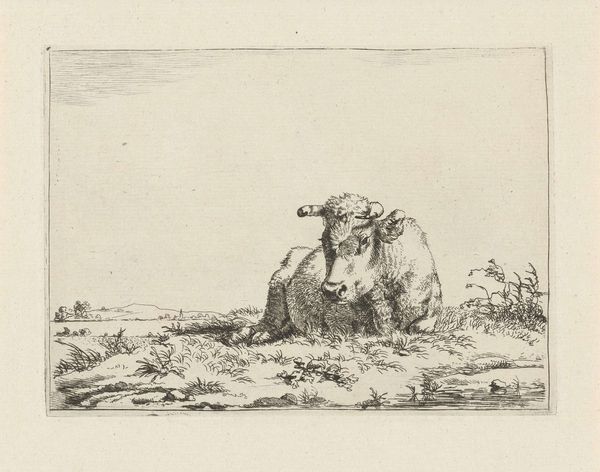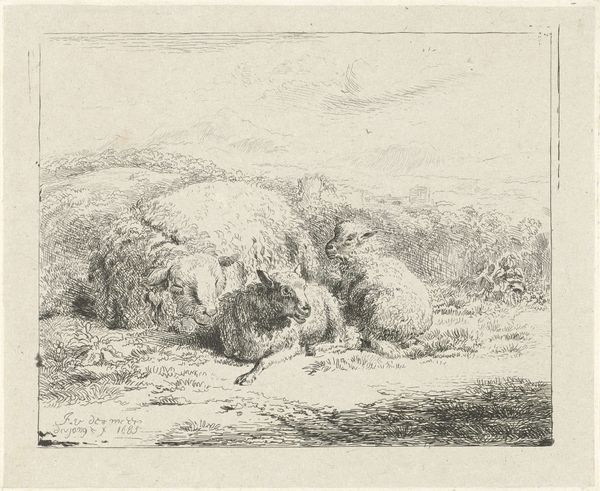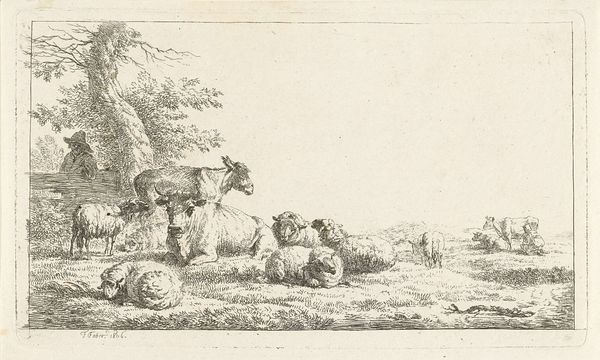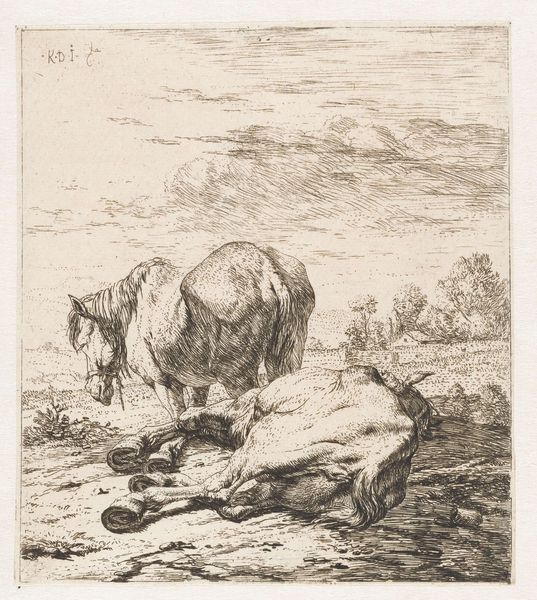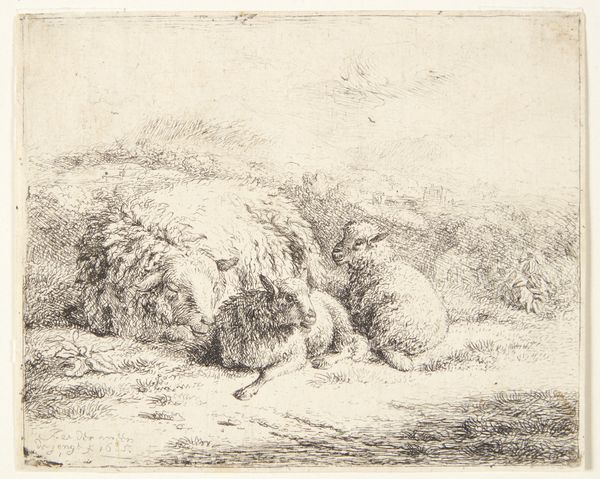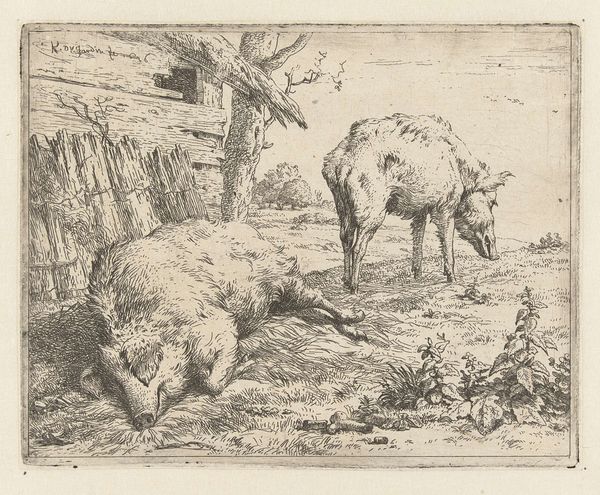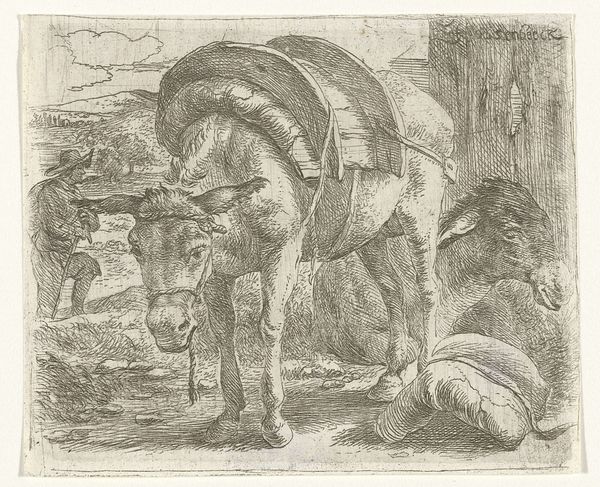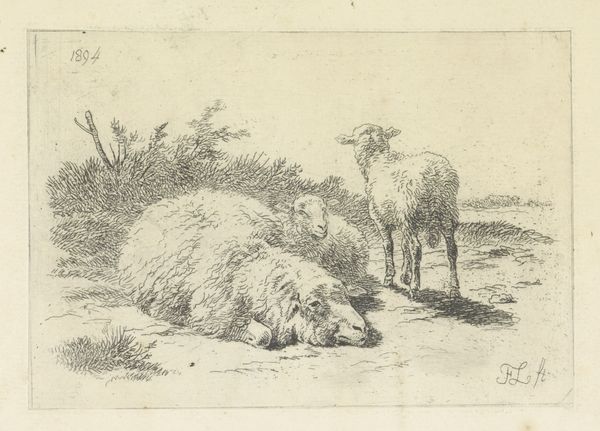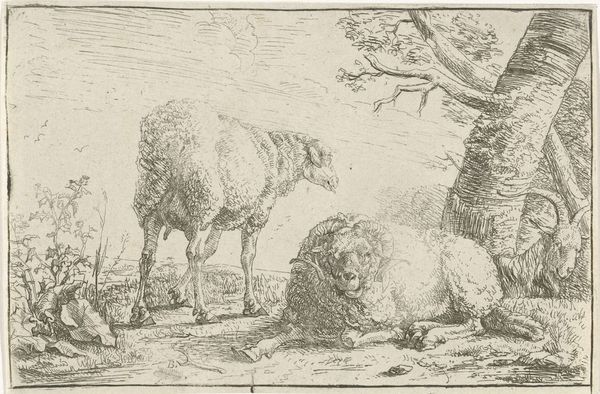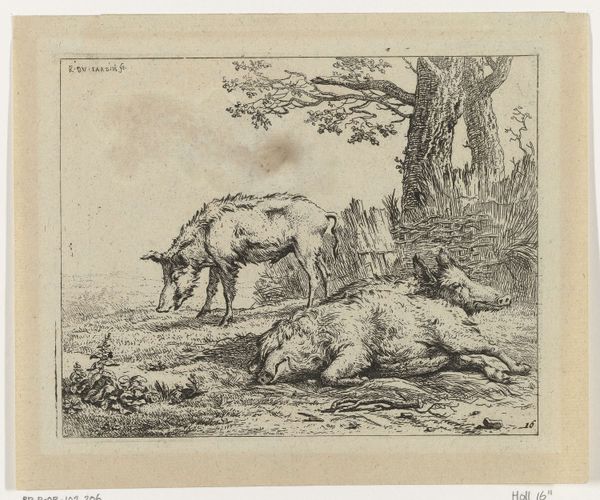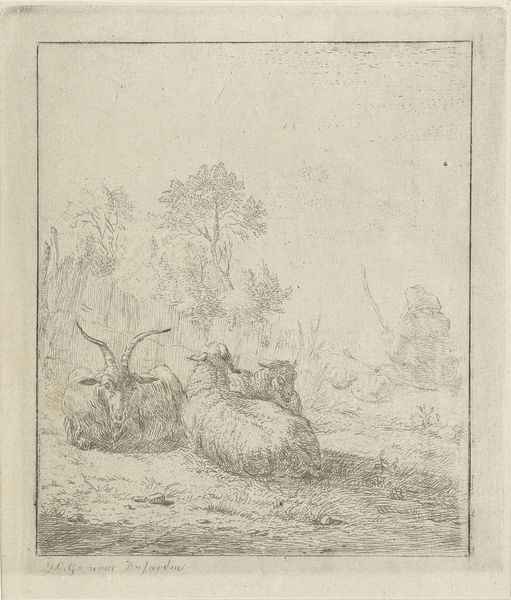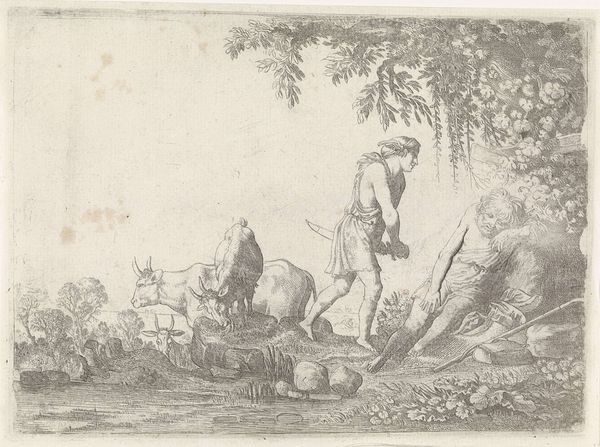
#
pencil drawn
#
amateur sketch
#
light pencil work
#
pen sketch
#
pencil sketch
#
pencil drawing
#
pen-ink sketch
#
sketchbook drawing
#
pencil work
#
initial sketch
Dimensions: height 103 mm, width 130 mm
Copyright: Rijks Museum: Open Domain
Curator: Here we have Abraham Hendrik Winter's drawing, "Schapen en een bok," created around 1820. It's a delicate pencil sketch of sheep and a goat gathered beneath a tree. Editor: There's a kind of pastoral serenity here, isn't there? It's peaceful. You see these drowsy animals in the shade. It makes you wonder about ownership, agricultural labor, and the historical relationships between humans and animals. Curator: It certainly evokes that slower-paced era. Considering the social history of agrarian life at that time, sheep represented not only sustenance but also an economic pillar in rural communities. Sketches like these were sometimes studies for larger works, documenting aspects of the natural and agricultural world for a growing urban audience. Editor: Absolutely. I find it compelling to view it through a lens of animal studies, though. These weren’t simply commodities, were they? Each sheep here bears a weight of representation: historical exploitation but also their own lived experience in shared ecologies. How does their presence shape discourses of human domination in landscape art? Curator: Precisely. And while it may seem idyllic, these types of images also served to reinforce societal norms, presenting a sanitized vision of rural life, often masking the harsh realities of agricultural labor and land ownership of the period. Who benefitted, and who was marginalized? Editor: And in viewing this drawing through the lens of eco-feminism, we could challenge these power structures embedded within landscape imagery, seeing how Winter represents non-human beings. They also had to navigate environmental factors such as land use or access to food sources within patriarchal structures. Curator: You bring such valuable contemporary interpretations to this piece! When viewing this, consider Winter's context: who was the audience for such sketches? They reflect a changing relationship with nature and the land. These pastoral images can become more complicated through an ecocritical perspective. Editor: Exactly! By weaving intersectional theories together we can expand ways of reading the image, while acknowledging animal histories. What feels simple upon first observation grows richer and more complex. Curator: Thinking about it now, these detailed observations offer a glimpse into both the bucolic fantasies and agricultural structures shaping the period in Winter’s landscape. Editor: Yes, precisely. Winter’s "Schapen en een bok" holds narratives of labor, representation, and exploitation and provides such space to delve into socio-ecological power systems through this one drawing.
Comments
No comments
Be the first to comment and join the conversation on the ultimate creative platform.
